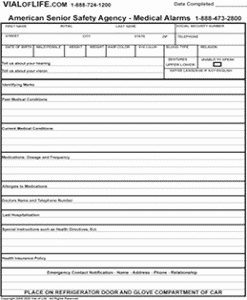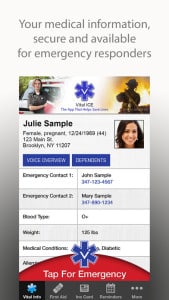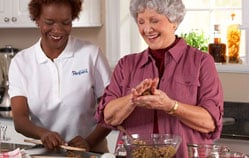Being prepared for recovery at home is necessary whether you are returning directly from the hospital or from a rehabilitation facility. Because patients are rarely released at 100% from either facility, there is usually a transition period to get you up to 100%.
Therefore it’s good to consider your needs so you will be fully prepared. First start with the post-hospital rehab stay packing list (in last week’s blog post) to make sure you have the basic needs at home, such as easy access clothes, non-slip/closed-back shoes and slippers, mobility devices, etc. Everything on that list will be helpful during your at-home rehabilitation period. But there are also several other things to consider when transitioning home, such as:
- Is a visiting nurse needed? How will it be covered?
- Is additional physical and occupational therapy needed? How will it be covered?
- How will daily living activities be handled? (Meals, bathing, shopping, and other every day needs.) Will family members help with these tasks, or will outside home care services be needed (from companies such as SeniorHelpers).
- What products, normally provided in a facility as aids to daily living, will be needed: adult diapers, sheet protectors for the bed, compression socks, and other medically related items, including the tools to aid in dressing, skin creams to protect against bed sores, etc. Consider all the products the hospital or rehab facility used in your loved ones care and determine if they will be needed at home as well.
- Know what medications will be continued at home. Make a list with the name of the prescription, the dosage, frequency, what it is for, and what it looks like. Be sure prescriptions have been provided (ask that they are called in to your local pharmacy). Keep the list handy for visiting nurses and for follow-up doctor’s visits, as well as in case of emergency. (Also available care of Hospice of Michigan at HOM.org is this handy Pill Box Fill TOOL)
- If your loved one is living alone, be sure to have a plan in case of emergencies. Also, make sure all vital information is easily accessible.
*Did you know that emergency First Responders are trained to look for vital information on and in the refrigerator or freezer? Now is a good time to pull that information together and put it there to save time in the event of an emergency.
Vital information includes:

Name and birthday
Address and phone number

Emergency contact: Name, phone number, and relation
List of current medications and doses
List of allergies
List of any medical devices (pacemakers, defibrillator, ports, etc.)
List of current doctors with their office phone numbers
Insurance card copies
DNR orders and form
Power of Attorney (POA) forms

Make sure the Vital Information packet is clearly labeled. You can find free forms at http://www.vialoflife.com/
Also consider one of the many Vital ICE apps available for smartphones. This will be a significant help if an emergency occurs outside of the home.
Luck is when preparation meets opportunity. Be prepared and your recovery will go smoother.
And don’t forget your Cravaat® for keeping your clothes clean while eating. It will help ease the burden of laundry and give you more time to focus on therapy and rest.
Sources for this article: Rita Bentley, LBSW, of Senior Helpers; VialofLife.com




Comments are closed.